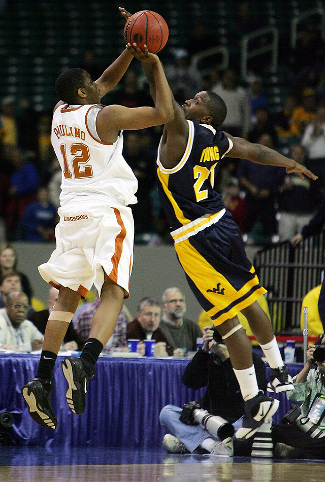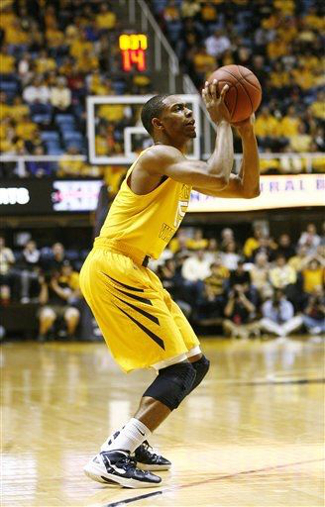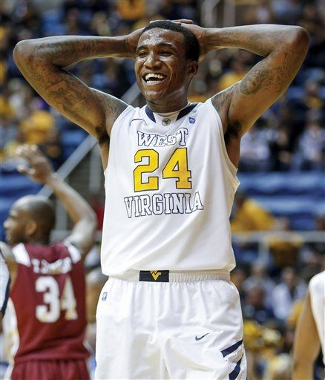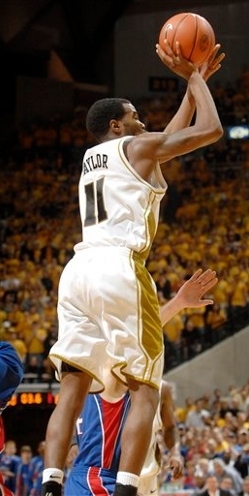West Virginia Mountaineers (7-6 overall, 0-1 Big 12) at Texas Longhorns (8-6, 0-1)
Erwin Center | Austin, TX | Tip: 8 P.M. CT | TV: ESPN2
LRT Consecutive Game #235
The series between Texas and West Virginia has a short history, but it has been memorable in every way. The Longhorns hold a 2-1 edge all-time versus the Mountaineers, as WVU comes to the Erwin Center tonight for the first time as members of the Big 12.

Kenton Paulino broke the hearts of WVU fans in 2006
(Photo credit: John Bazemore/Associated Press) 
Terry Henderson knocked down six triples against OU
(Photo credit: Randy Snyder/Associated Press) 
Aaric Murray is easily frustrated by foul calls
(Photo credit: David Smith/Associated Press) |












 1
1  2
2 
